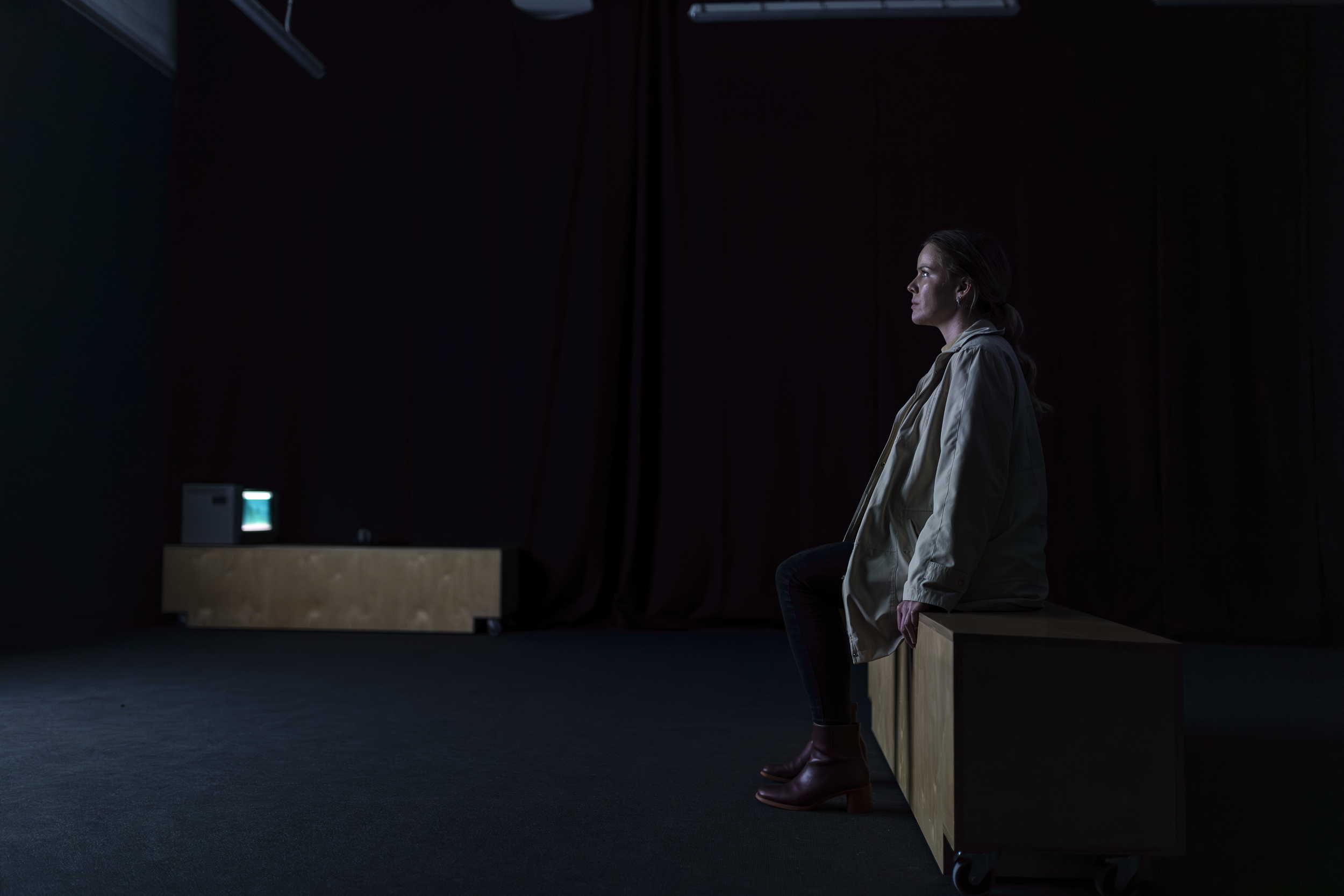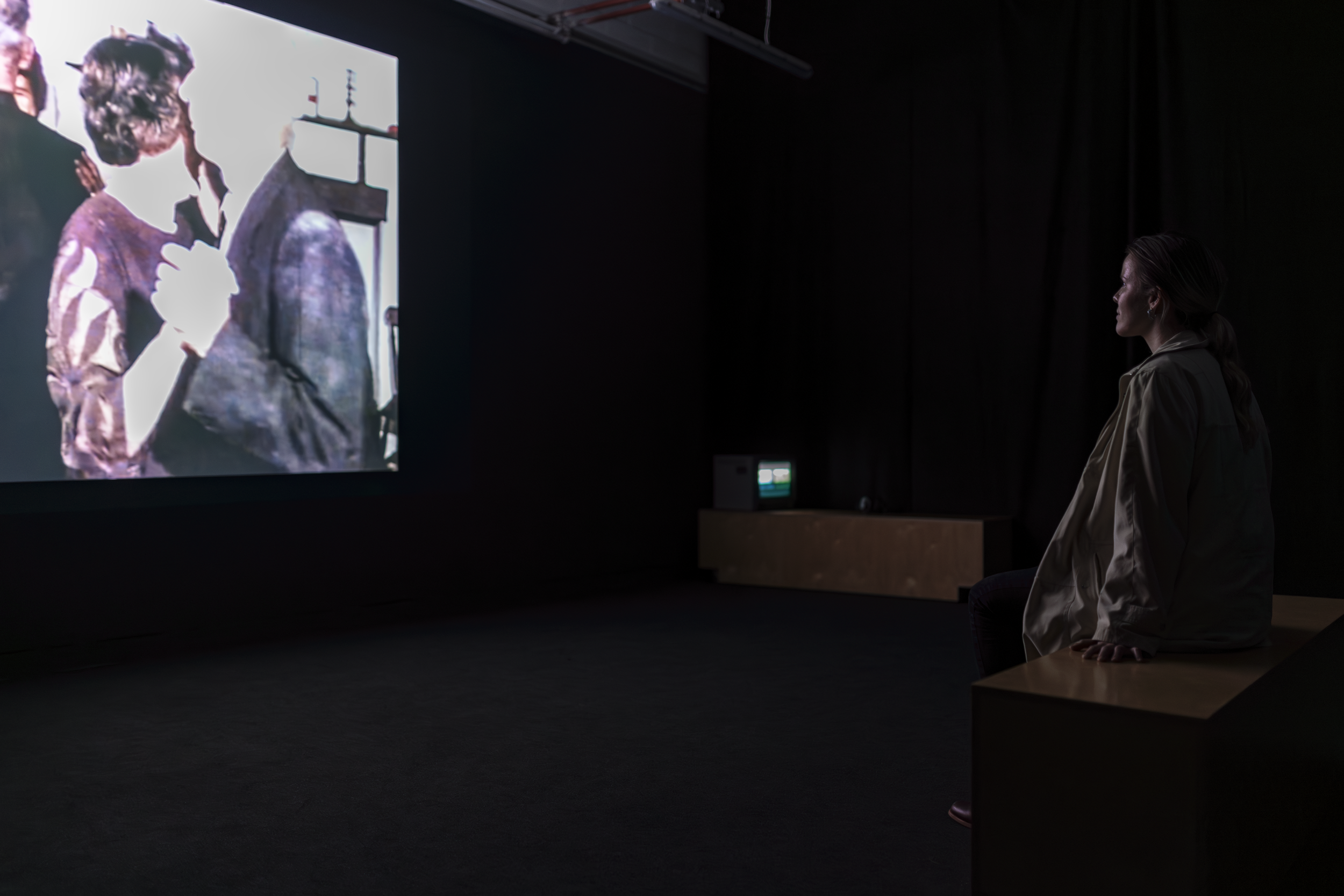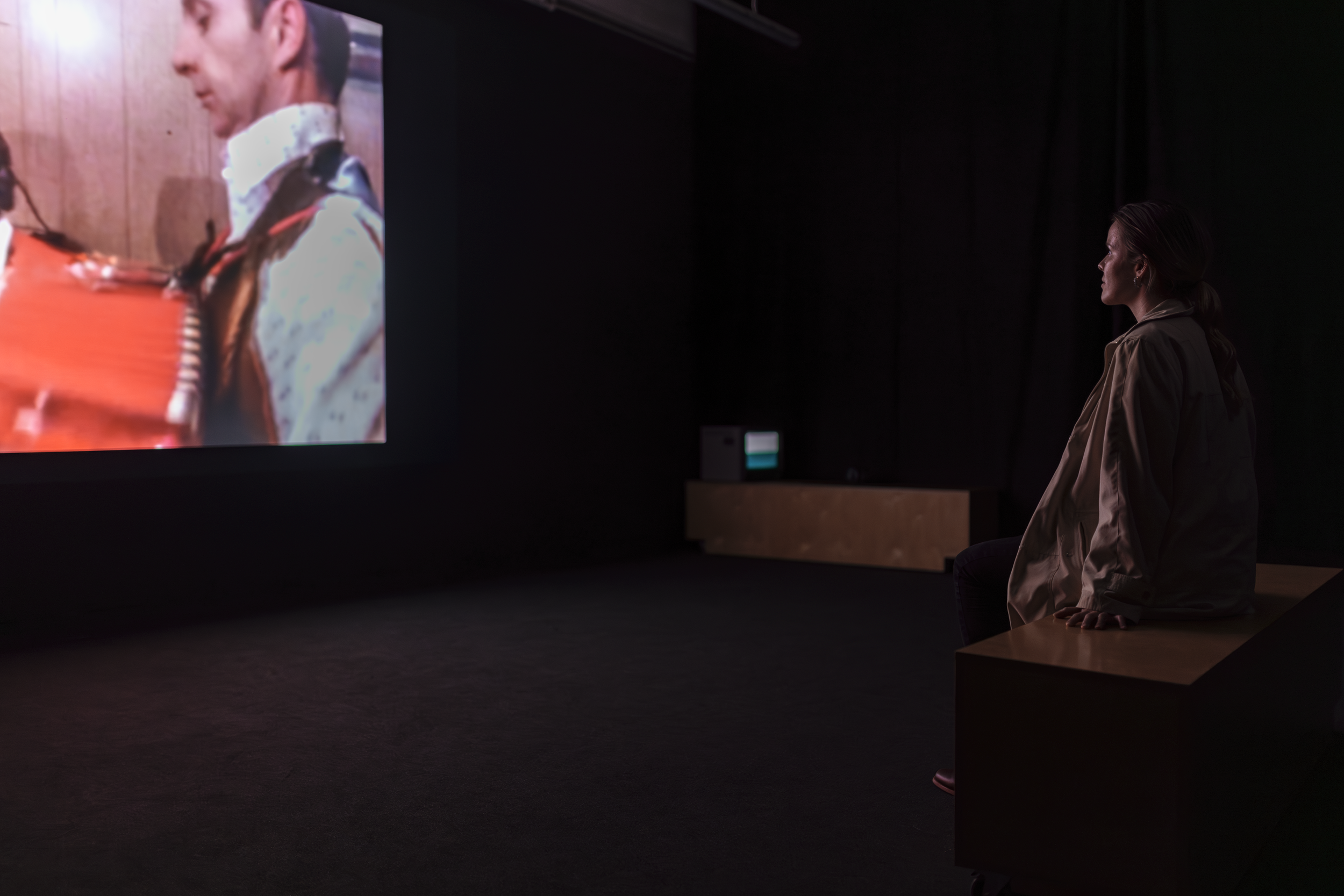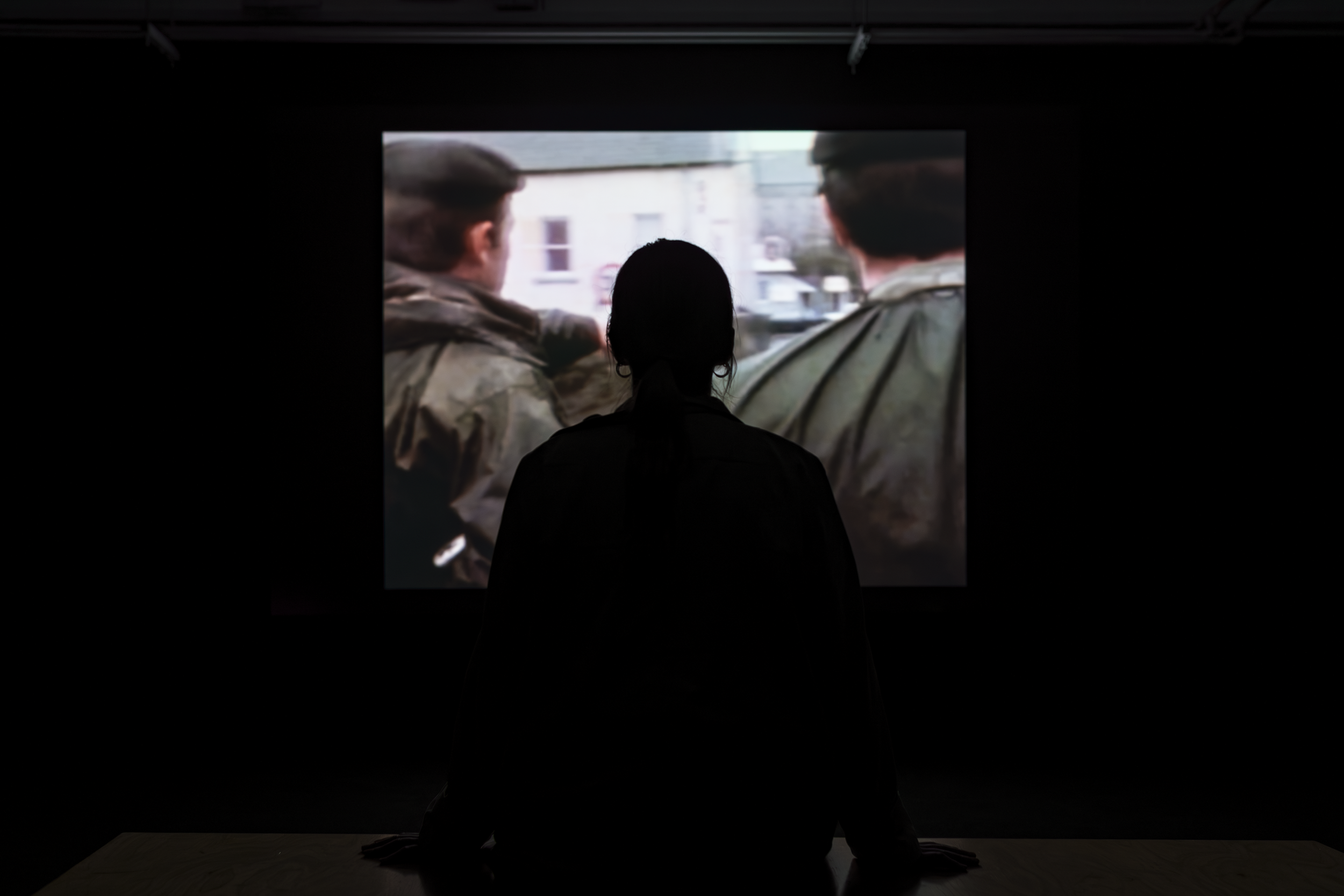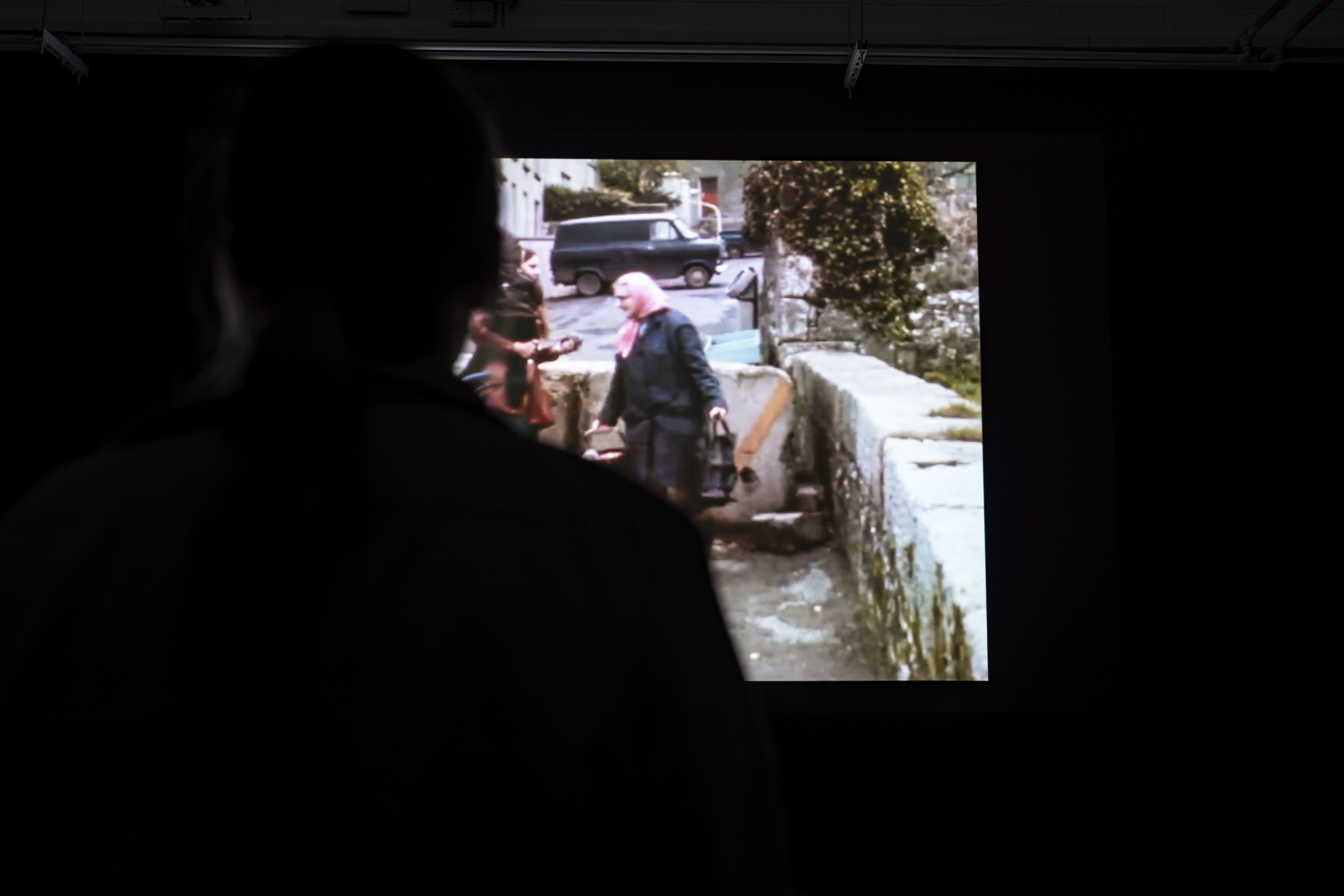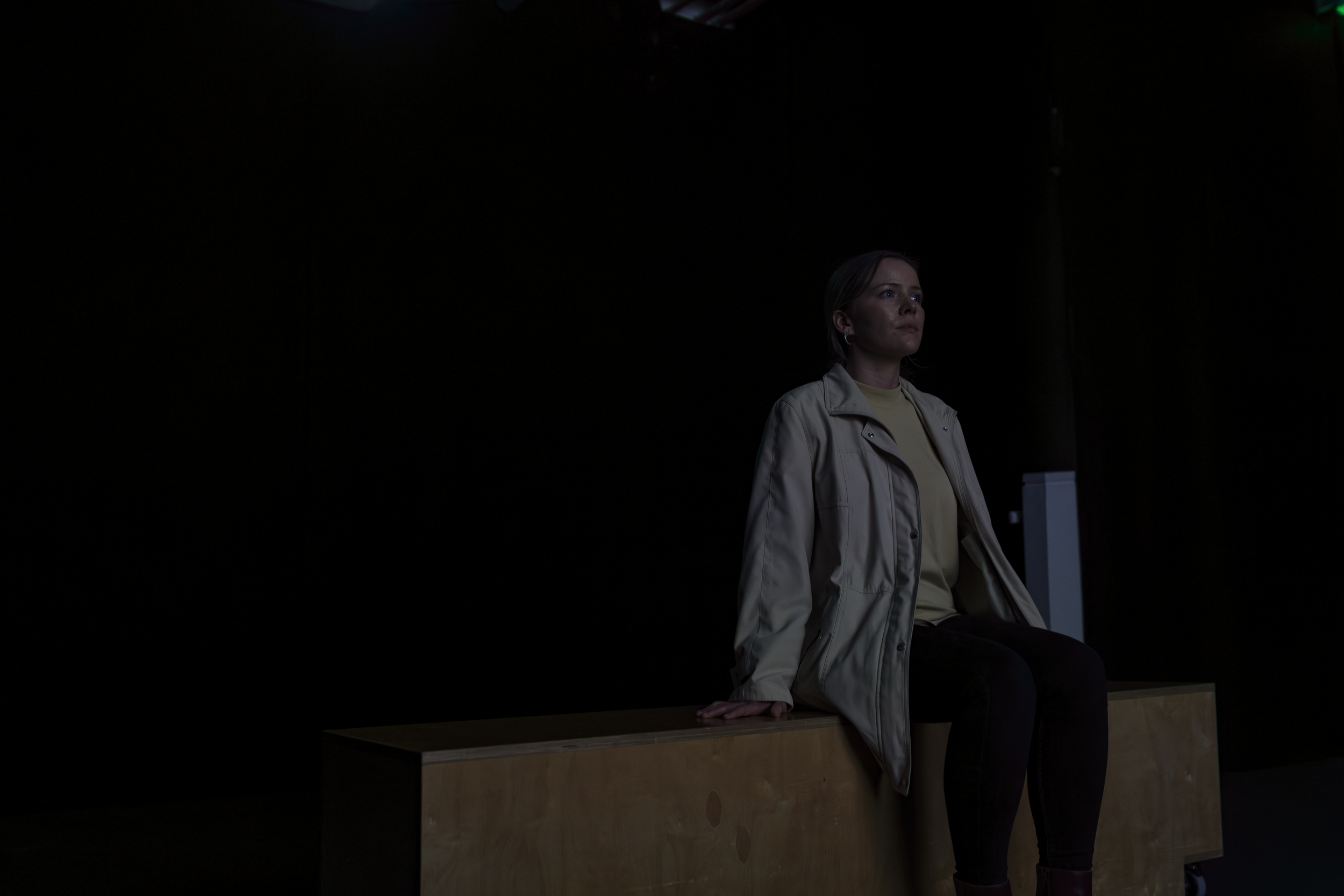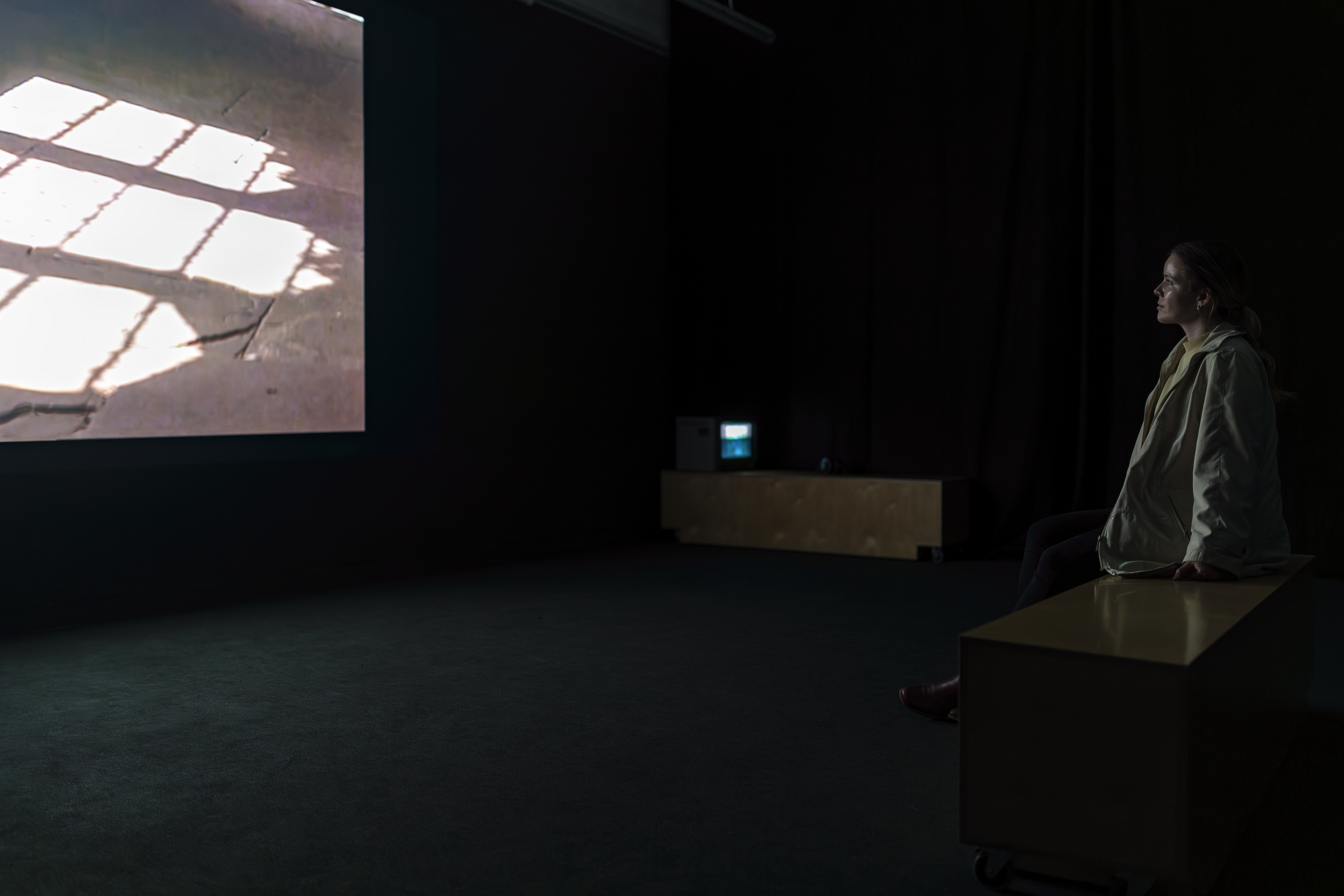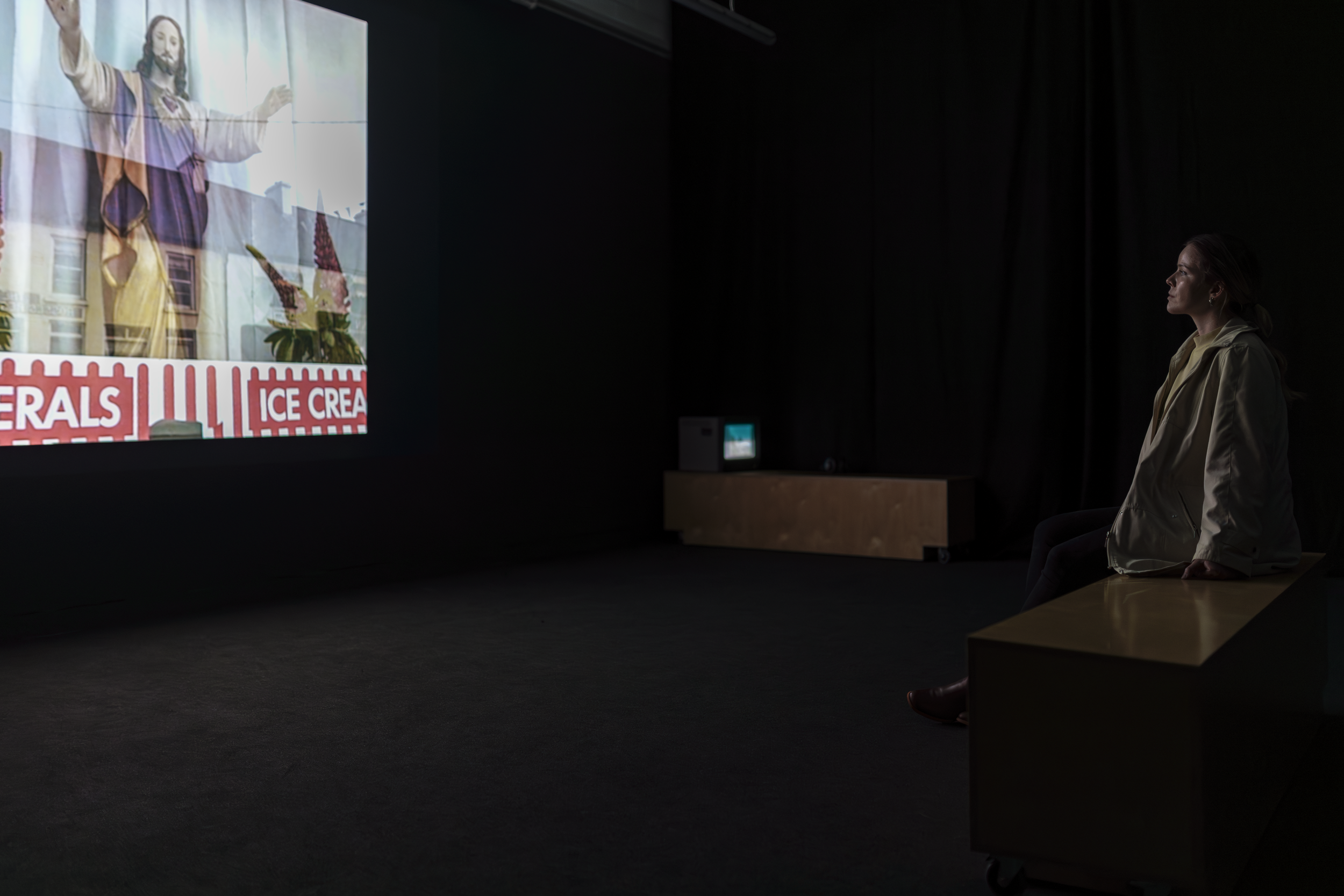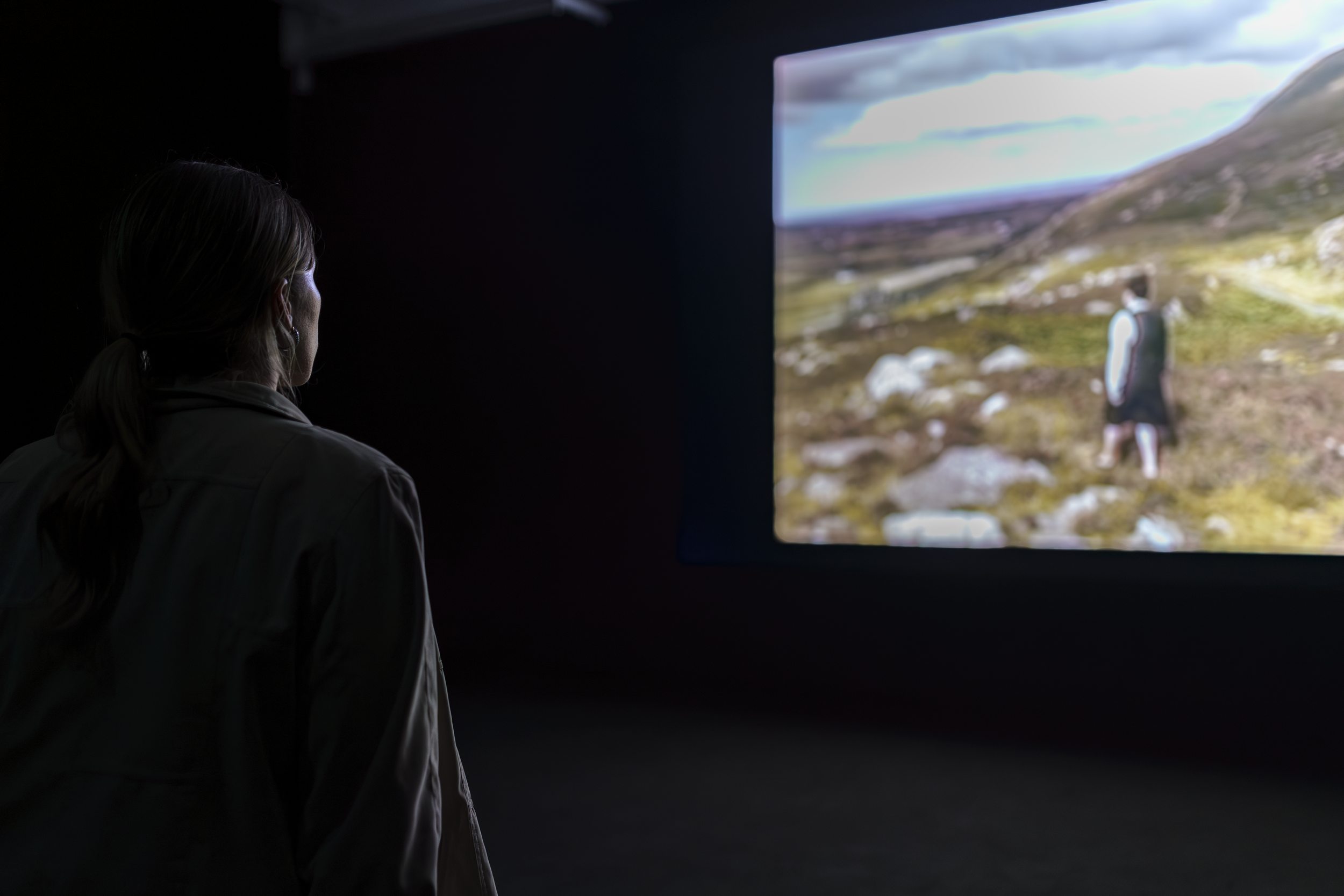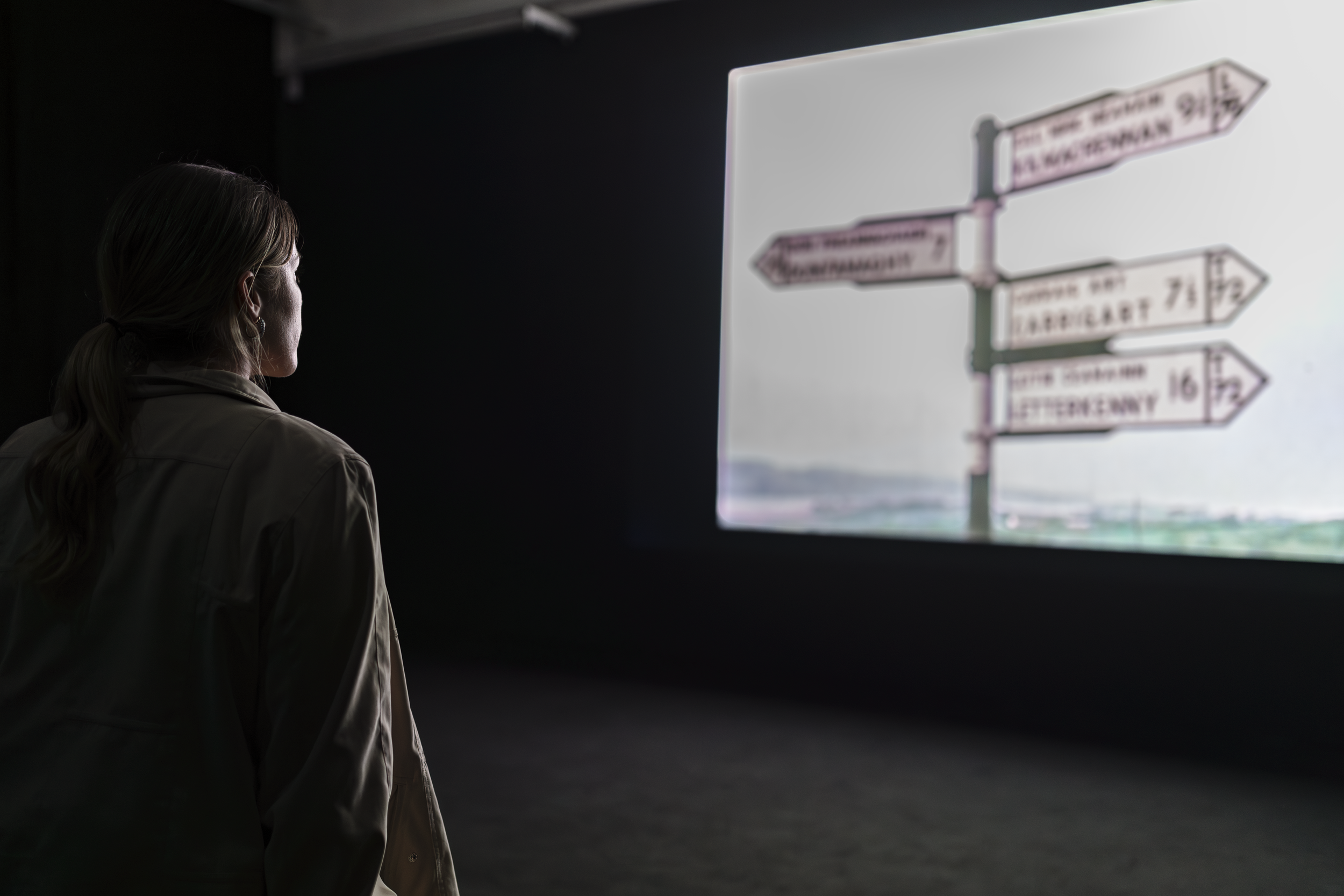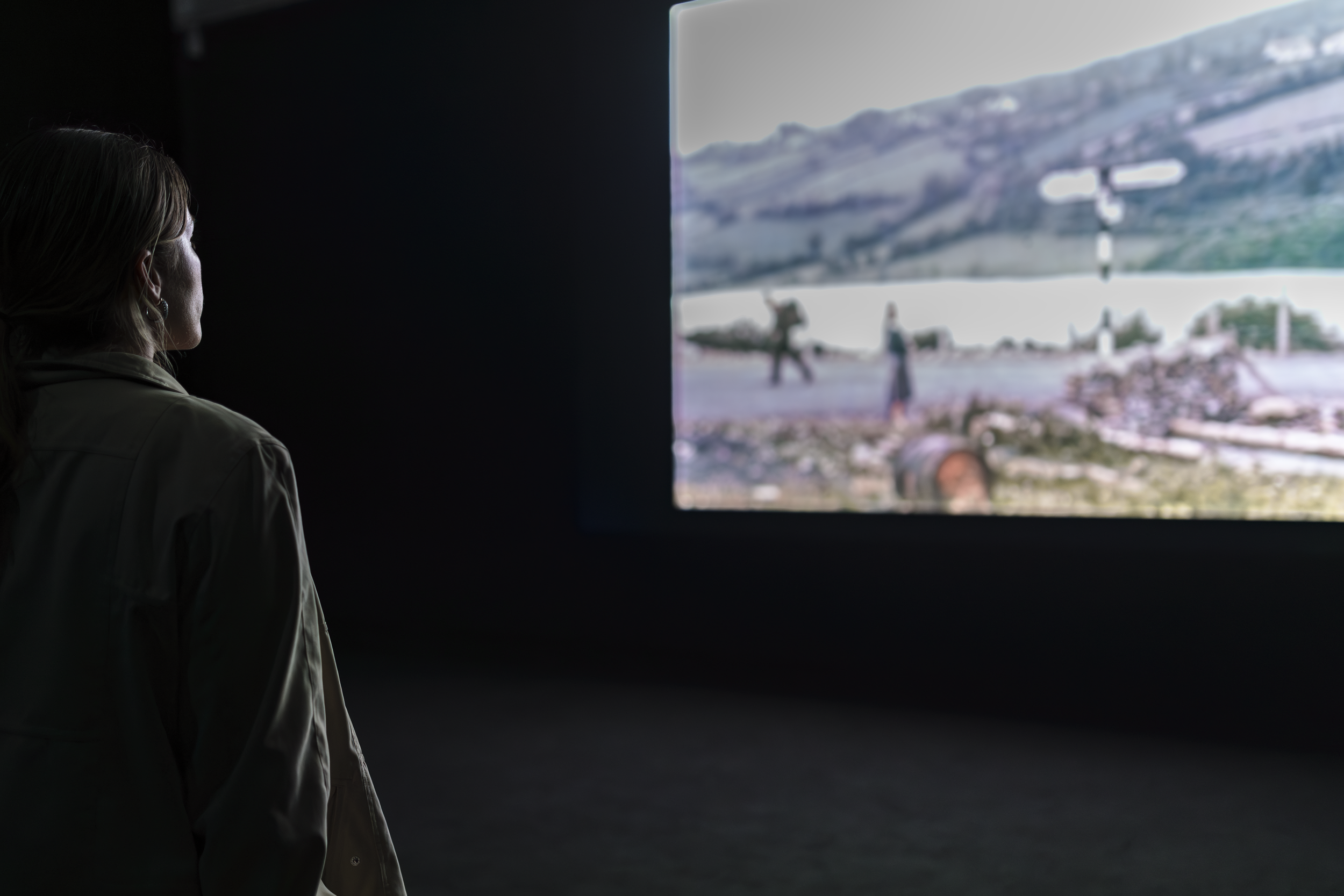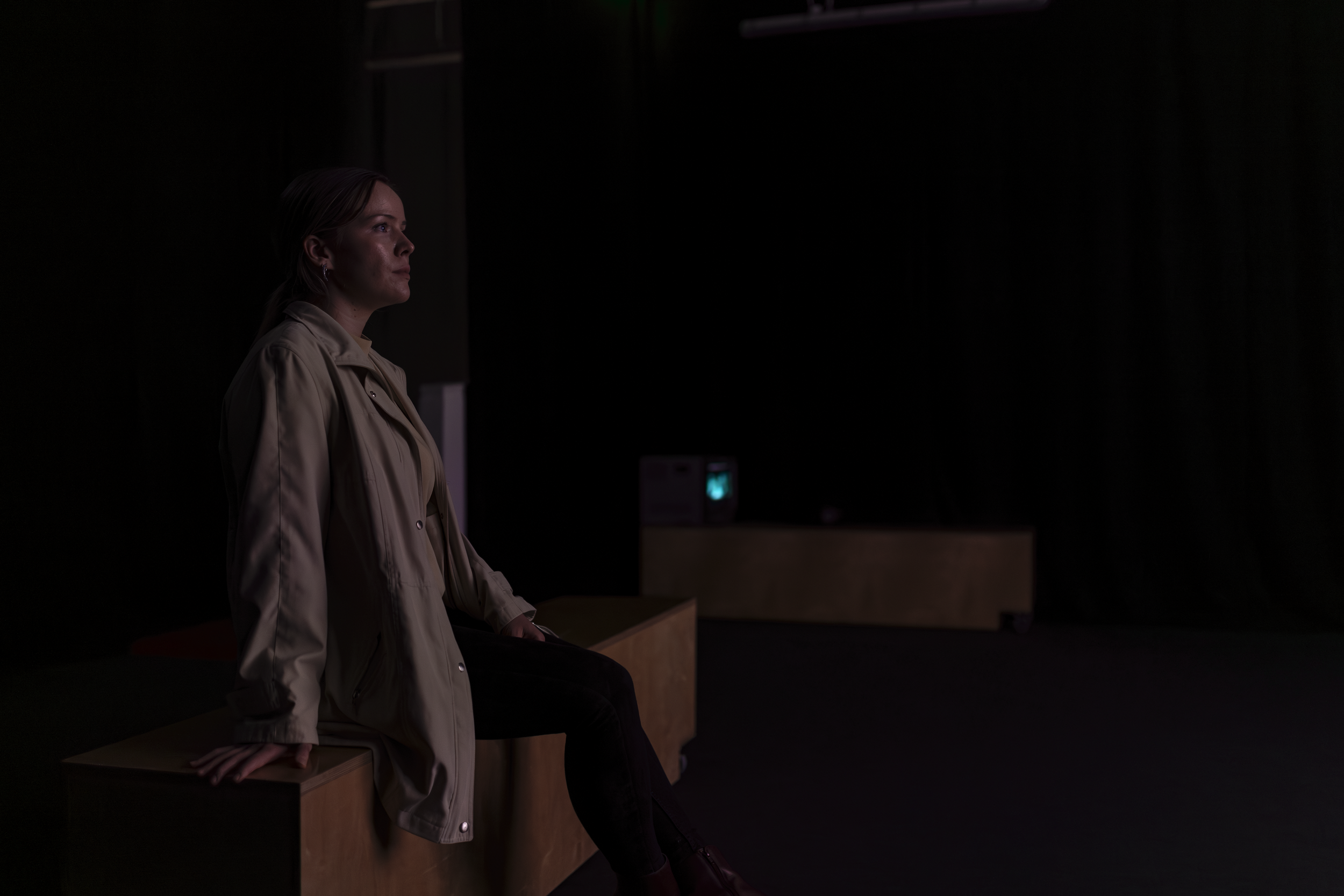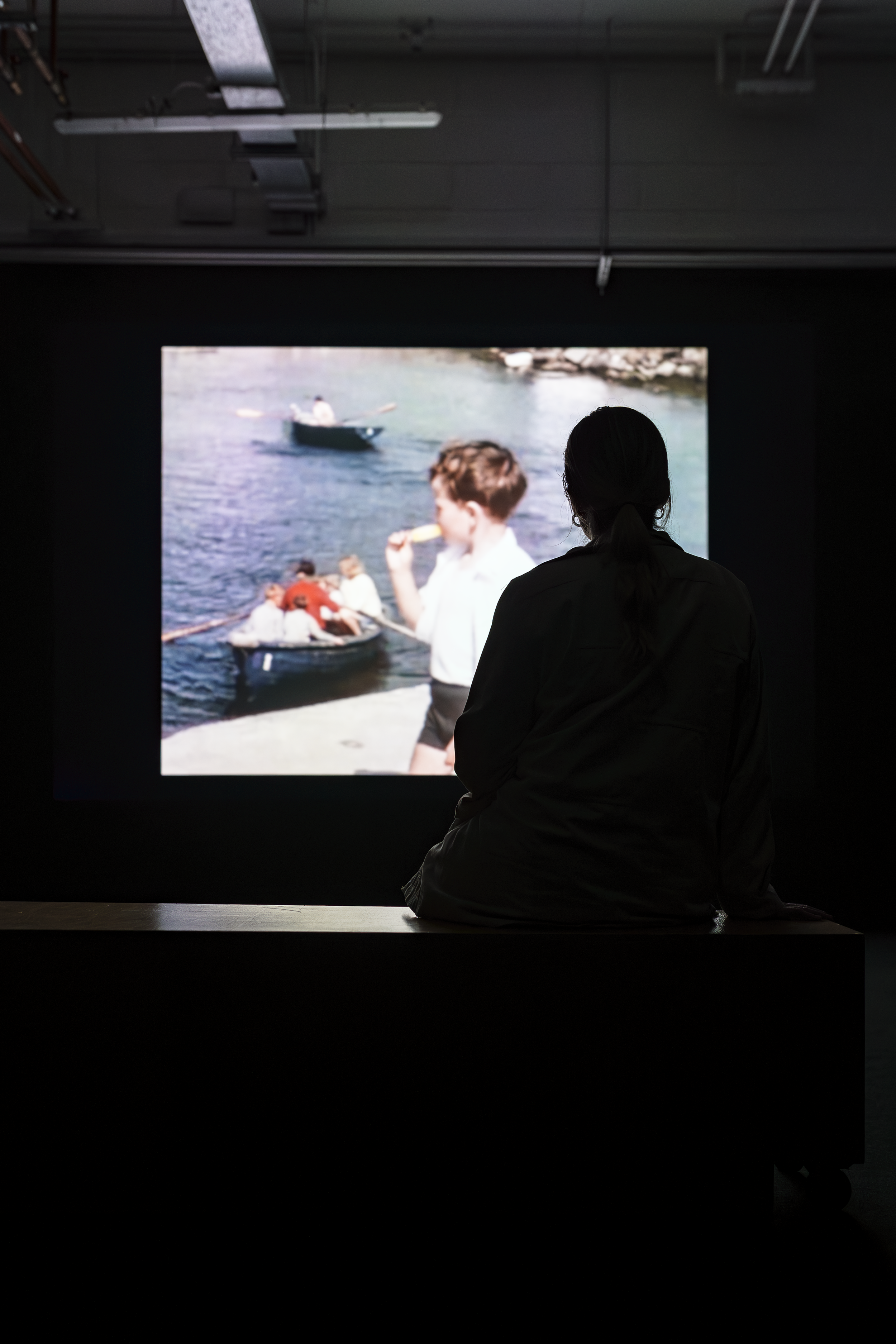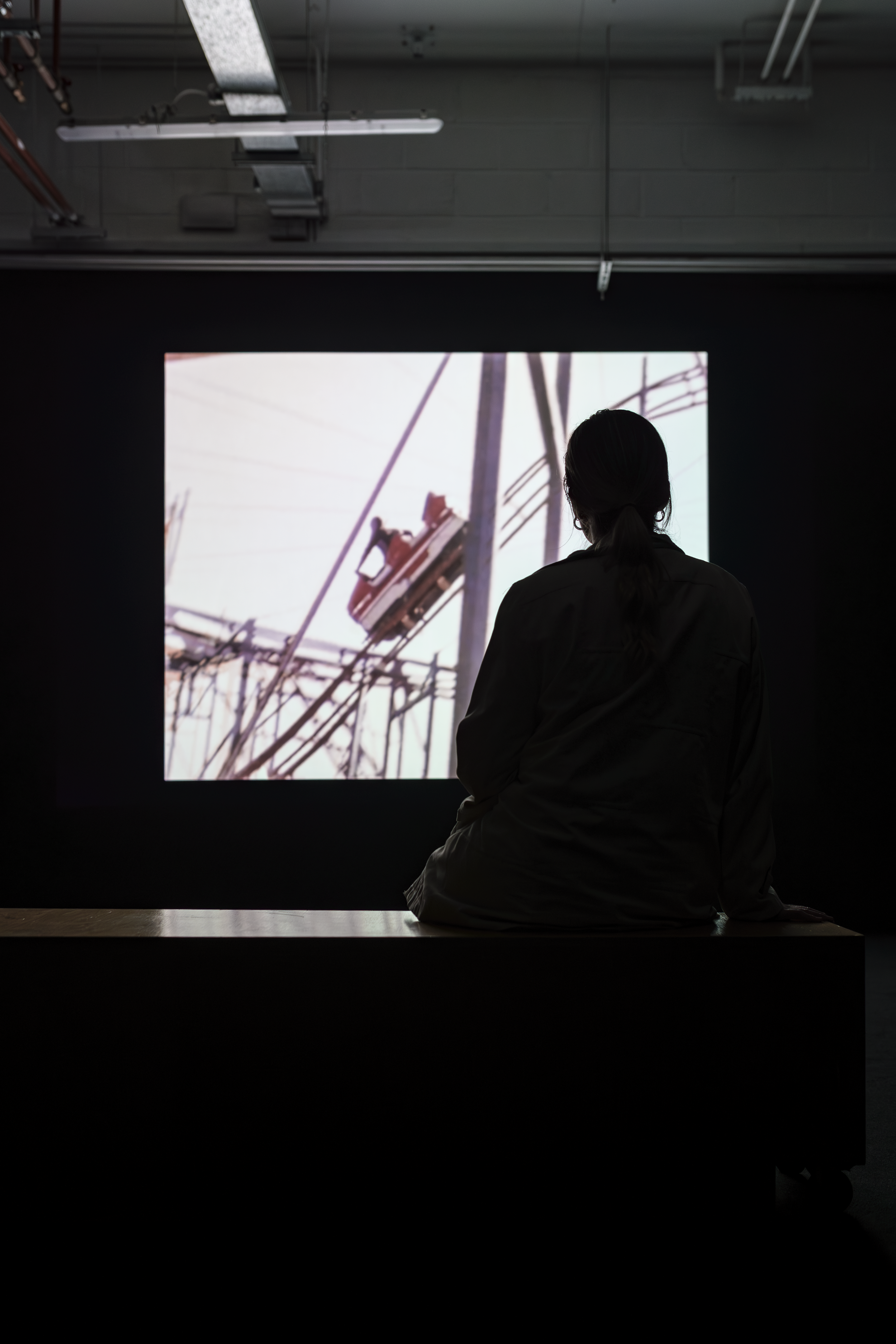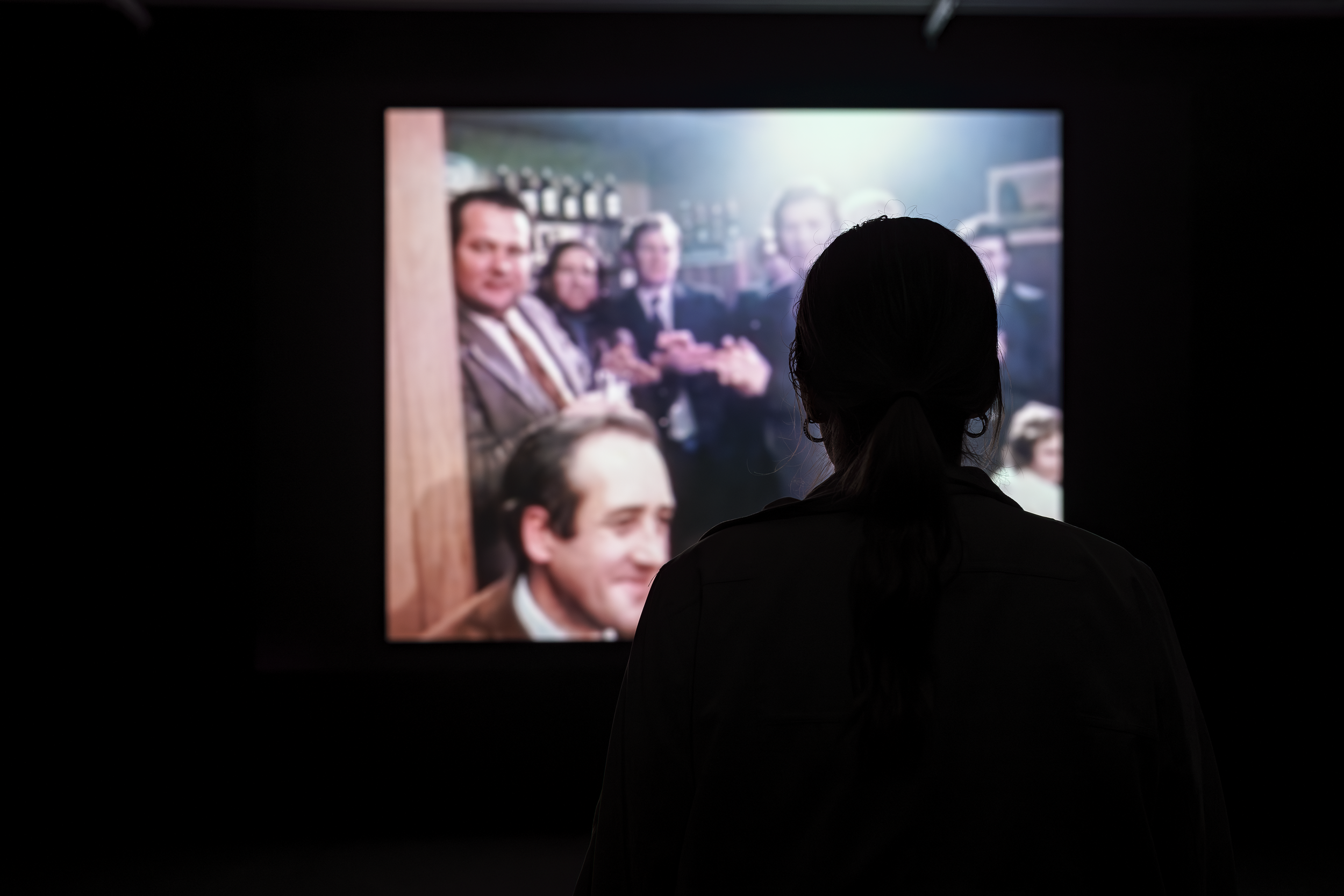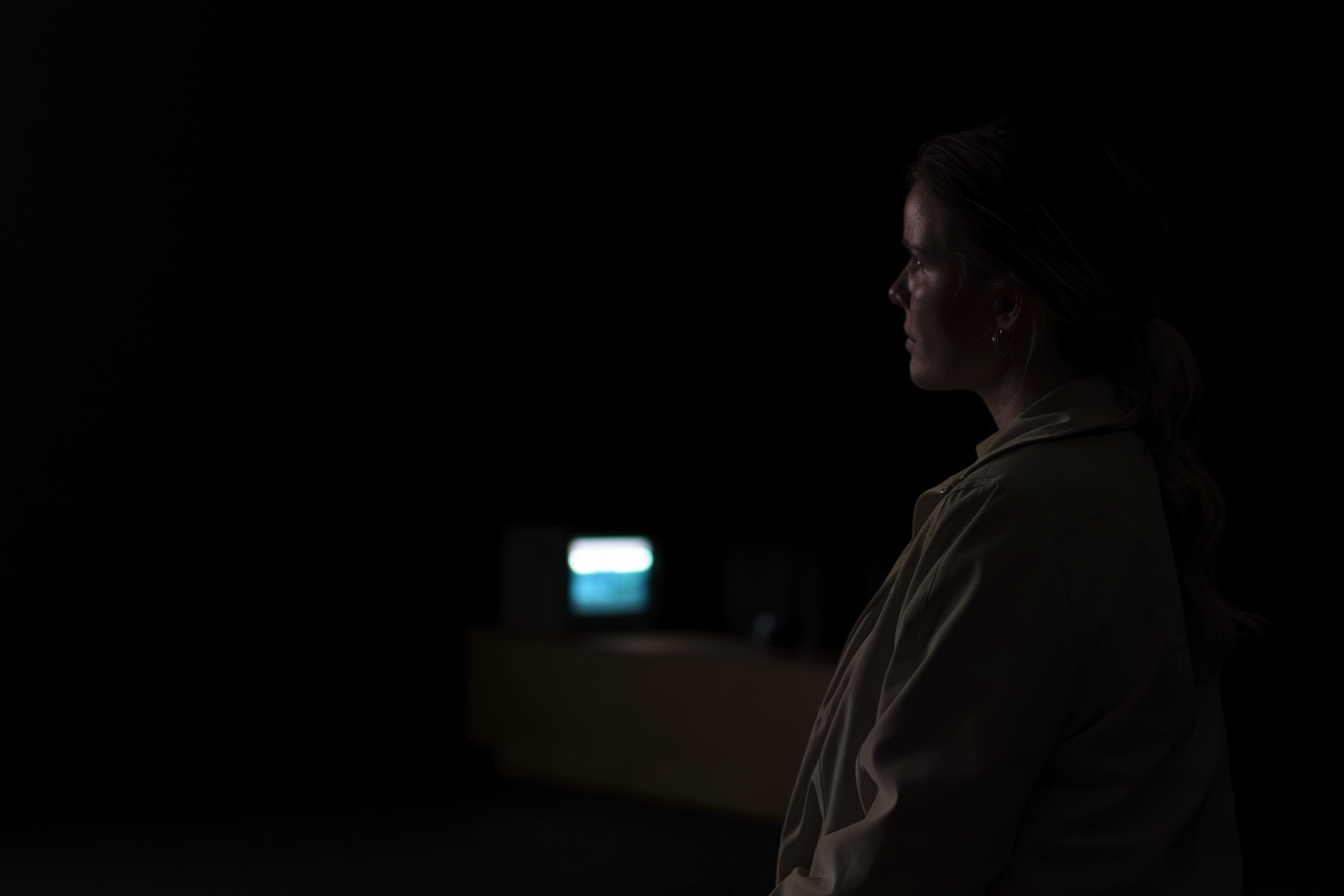The Irish Question (2017) - shortlisted for the RDS Visual Art Awards
The Irish Question at the Irish Museum of Modern Art as part of the Living Canvas in partnership with the RDS, February 2025.
Pictured L-R: Michelle Hall, Fiona Gordon, Nikolas Ryan, Rachael Gilbourne (curator, IMMA) Aisling Phelan, Ara Devine, Orla Comerford and Nadia J. Armstrong at the launch of the RDS Visual Art Awards screening programme for Living Canvas at IMMA, in partnership with IMMA and IPUT Real Estate, presenting film and moving image work by past Visual Art Awards artists. Screenings 4 to 17 Feb 2025, visit imma.ie . Photographer: Sasko Lazarov / Photocall Ireland
The Irish Question
Solo exhibition at the Regional Cultural Centre, Letterkenny, Summer 2023
Exhibition text by Ingrid Lyons (Photographs by Eugene McGinty)
There is a story about a tune in Donegal. While the travelling fiddle maestro John Doherty waited for the bus, he was approached by a man who wanted to acquire a beautiful slow air called ‘An Cúilfhionn’ that Doherty had played the previous night. Doherty obliged, but the bus arrived just as he began to bow the notes. He accelerated the tempo in order to impart the full piece before leaving and what was a slow air became a jaunty march as he played out the bus door while it pulled away. So, the tune, believed to date from 1296 or 1297 was transformed in its transmission to create a new tune that lives on in the repertoire.
Footage of John Doherty appears in Ara Devine’s film, Last Look, a work representing a bygone way of life. The film highlights customs and traditions of Donegal as distinct from the rest of Ireland, and considers the county’s proximity to political unrest in the north of Ireland during the Troubles. Utilising archival footage, Devine looks at the formation of an identity according to place. Composer Orri McBrearty’s score binds the visuals with contemporary iterations of traditional tune fragments, which carry the narrative thread through footage from house dances in villages to border-checks in rural areas. The score begins its crescendo as British soldiers patrol small towns, and it peaks with footage of violence erupting in the streets of Derry. There follows a de-escalation in the rhythm, as the calm atmosphere and beautiful landscapes of south-west Donegal return, and we follow the winding road from Carrick to Bunglass, towards the breathtaking sea cliffs of Slieve League. In Last Look, Devine looks at how an identity of place is formed both geographically and politically, fostering a unique collective experience. Circumstances and events find expression in music and storytelling.
The Irish Question considers the co-dependency of philosophical tenets and folk mythologies in gaining a clear understanding of complex histories. Social and political rituals forge new mythologies. Through ritual, which is the physical embodiment of myth, we are able to feel connected to each other. Devine approaches the idea of post-memory and intergenerational trauma as it pertains to oral history and folklore. Within his films he examines how we inherit experiences and stories which are densely compounded and loaded with specific lexicons of symbolism. Through his practice, Devine articulates distinguishing factors like having a particular accent, or moving through a specific place at a given time as imbued with a sense of danger. To illustrate this, he draws on archival footage, combining it with documentation of personal and familial narratives of historical events.
While counties in the north faced the troubles directly as a war zone and counties in the south indirectly, border counties acted as buffer zones where safety and security existed in close proximity to danger and atrocity. As a result, there exist in many family histories stories of seemingly ordinary days that culminated in life-changing ordeals. This is approached in Milk Teeth (2022), depicting a conversation between a father and son, where a familial discussion extrapolates a personal narrative from within a political, colonial context. Beginning with The Irish Question (2017), with its presentation of archival footage alongside videos and photographs taken by asylum seekers in direct provision, Devine has sought to open a dialogue on ‘Distributions of the Sensible’ and what it means to construct a national identity. The premise of this film, expanding to inform a sustained consideration within Devine’s practice.
The transformation of perception that occurs through engaging with art is a significant focus for Jacques Rancière in discussing the formation of new subjectivities. The Politics of Aesthetics: The Distribution of the Sensible is his account of how new political and social identities have arisen, and how the voices of once-oppressed and excluded groups came to be heard and recognised by the dominant social order during the 20th century. The ideas behind Rancière’s ‘Distribution of the Sensible’, are the myriad ways political and social identities can arise to challenge the dominant social order. He posits civil rights movements as the basis for the formation of new subjectivities and identities where a genuine political presence emerges from cohesion through empathetic solidarity.
Maritime history has left its cultural mark on Donegal, connecting people with Scandinavian culture to the north, and with music and dance traditions of the Iberian Peninsula to the south. Seasonal work which took Donegal people to Scotland, ‘tatty picking’, has also impacted the county in that people were more likely to travel to Glasgow than Dublin. Its political relations with occupied counties in Northern Ireland is also particular given numerous contributing factors during the time frame of The Troubles, including for example the mass exodus which took place each year as violence escalated on the 12th of July. Such events continue annually but were more acutely dangerous in the ’80s and ’90s. This yearly occurrence of families moving across the border for safety and security has fostered a unique position for the county as people carried with them their experiences and customs.
With a jagged coastline and a historical border, Donegal has been separated geographically and politically from the dominant cultures in both Ireland and the six counties in Northern Ireland, emphasising its insularity and creating a cultural and political island of the county. With movement in and out of the county policed by British soldiers on the border – leaving only a small piece of land in Leitrim to be crossed freely – it has a unique history as part of, and distinct from, the history of surrounding counties. Regarding it in this way enables us to imagine other worlds that complement or contradict each other. As Hernán Diaz puts it in his essay, ‘A Tropical Paradise: Literary Archipelagos Since the Great Age of Exploration’, ‘in their non-expanding, self-contained difference, islands are seditious and insubordinate. This persistent gesture of refusal turns them into politically active spaces’.
In approaching complex histories, Devine posits the archive as a construct that may be as reliable or unreliable as personal histories and oral histories. In the poem, ‘Last Look’, which lends a piece in this exhibition its title, Seamus Heaney merges atmospheric internal meanderings with detailed and specific social histories. Through the medium of film, Devine considers the construction of Irish identity from narratives uncovered from family stories and archival material with a focus on his home county. He explores culture as it has been circulated and/ or as it has arrived naturally, through the movement of people and their customs, rather than projected, based on an ideal of Irish identity. Ara Devine, in this exhibition reiterates the possibilities of using fiction to expand on truth.
INGRID LYONS writes about contemporary art and culture and is currently developing a number of works in fiction and creative non-fiction. She is a regular contributor to Ireland’s leading arts publications including Visual Artists’ News Sheet and Mirror Lamp Press. Lyons has written for numerous galleries and art institutions in Ireland as well as internationally and she continues to develop a writing practice that includes immersive research practices such as collecting oral narratives and musical collaboration to complement more traditional academic research methodologies. Collaborative exchanges with artists and musicians include a publication titled, ‘Proud and Strong All Day Long’ (2018) with artist Kathy Tynan, a performance at the Hugh Lane Gallery with artist Ella Bertilsson (2023) and a piece for theatre titled ‘It’ll all come out in the wash’ made in collaboration with musician, Lisa O’Neill (2021). Lyons has recently completed a research residency at Est-Nord-Est, Résidence d’Artistes Quebec (2022).
The Irish Question (2017)
Using both archival and recorded footage, 'The Irish Question' explores what it means to be Irish in the contemporary world. The installation consists of a projected two-channel film with a duration of 4 minutes 50 seconds that first examines footage from the Irish archives, followed by videos and photographs taken by asylum seekers in direct provision. The piece is interested in the juxtaposition of these two recordings, both made in Ireland, but documented and released in very different ways. A spoken narrative in both Irish and Arabic, with English subtitles, describes the story of growing up in Ireland. Examining the language, symbols and traditions that constitute a national identity, it questions where we lose an opportunity for growth by becoming more defined.
Exhibited at the NCAD Graduate Show 2017 and the RDS Visual Art Awards 2017
"Ara Devine’s film, The Irish Question, is in its way another gem. Surprisingly so, because it sounds overly schematic in outline: a compilation of archive footage explores aspects of stereotypical mid-20th century Irishness, with subtitled Irish language narration, and a second sequence consists of video and photographs by asylum seekers stuck in the purgatory of direct provision, with subtitled Arabic narration. It’s an immensely thoughtful, tactful piece of work that quietly asks questions about identity...it deserves widespread circulation."
- Aidan Dunne, The Irish Times https://www.irishtimes.com/culture/art-and-design/high-standard-of-entries-for-rds-visual-arts-awards-show-1.3271231
- Photographs and video from Asylum Archive by Vukasin Nedeljkovic and the IFI Archives
'The Irish Question' at the RDS Visual Art Awards 2017


